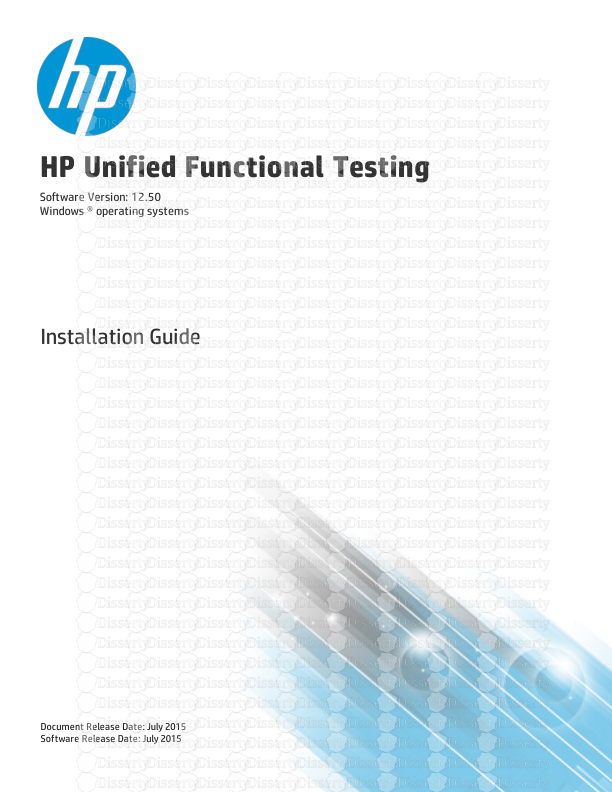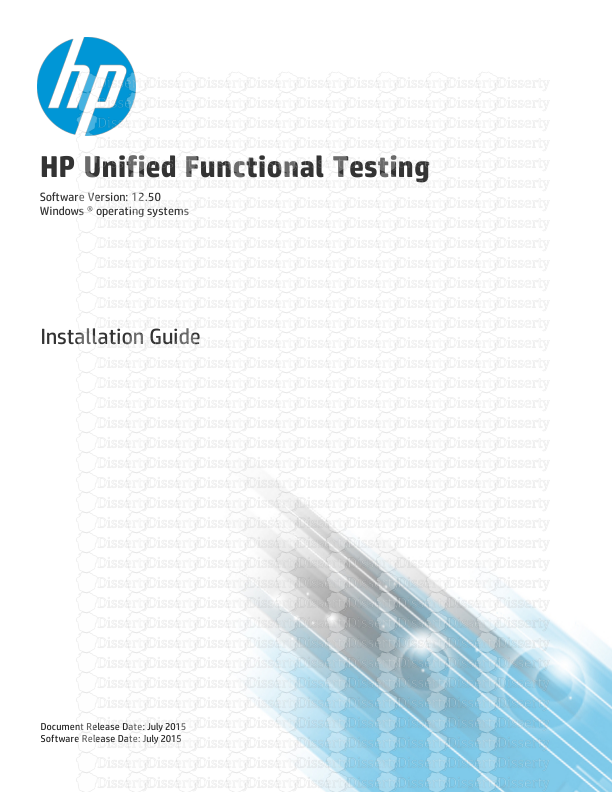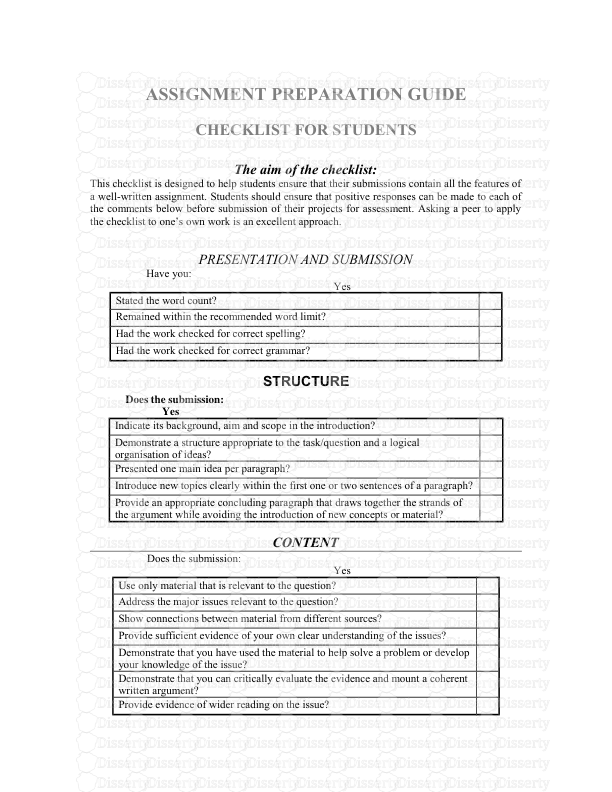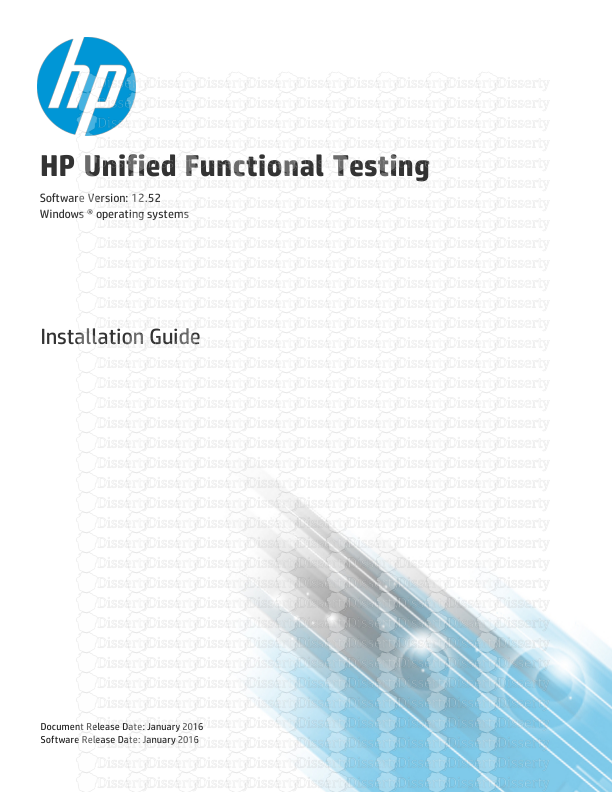PART ONE FIELD TESTING FOR PROJECT AND IA i TABLE OF CONTENTS Overview ........
PART ONE FIELD TESTING FOR PROJECT AND IA i TABLE OF CONTENTS Overview ......................................................................................................................................... 1 Testing............................................................................................................................................. 1 Project Acceptance Testing......................................................................................................... 1 Informational Testing.................................................................................................................. 1 Retests ......................................................................................................................................... 2 Miscellaneous Samples and Tests ............................................................................................... 2 Acceptance of Small Quantities .................................................................................................. 2 Nuclear Testing Program ............................................................................................................ 2 Testing Performed by Other Divisions ....................................................................................... 2 Testing Disputes, Resolution ...................................................................................................... 3 Independent Assurance Program .................................................................................................... 4 Responsibilities of the IA Lab .................................................................................................... 4 Independent Assurance Samples and Tests ................................................................................ 5 Independent Assurance Forms .................................................................................................... 6 Independent Assurance Files and Records ................................................................................. 7 Sampling and Testing Frequencies ................................................................................................. 7 Tester Qualification Program .......................................................................................................... 8 Field Lab Facilities and Equipment ................................................................................................ 8 Lab Removal and Setup .............................................................................................................. 8 Lab Calibration ......................................................................................................................... 10 Lab Equipment Repair, Maintenance and Replacement ........................................................... 10 Inventories................................................................................................................................. 10 Field Lab Record-Keeping ........................................................................................................ 11 Field Tester Safety ........................................................................................................................ 24 F I E L D T E S T I N G F O R P R O J E C T A N D I A State of Nevada Department of Transportation Construction Division Field Testing Guide January 2018 1 O V E R V I E W This resource has established the field testing guidelines to maintain compliance with 637B Title 23 Code of Federal Regulations (CFR) while assisting Construction Field Crews and the Construction Division in administering a quality construction project as it relates to field testing. Sampling and testing on roadway construction contracts ensures that materials and construction methods conform to plans and specifications. Consistent sampling and testing procedures are necessary to ensure quality materials and construction techniques are provided to the Department. NOTE: For more information regarding the Department’s Quality Assurance Program, refer to Chapter 4, “Sampling and Testing”, of the Construction Manual. T E S T I N G PROJECT ACCEPTANCE TESTING Project acceptance testing (field testing) is performed during the progress of construction on the materials to be permanently incorporated into the contract to ensure quality and consistency. In addition, some materials are accepted by the Department with submission of Certificates of Compliance from the Contractor and/or producer of the material or products listed on the Qualified Products List (QPL). The Department is responsible for all acceptance testing; with few exceptions. These exceptions include the measurement of pavement smoothness and the measurement of retro-reflectivity for striping. Project acceptance tests (field tests) are performed by construction crew testers and/or the Materials Division using the Synopsis of Materials Division Testing Manual for Field Testing or the Materials Division Testing Manual. To determine which test method revision to use on a contract, refer to the contract advertised date found in the e-bidding portal and use the test method revision dated on or before the contract advertised date. Tests are to be conducted at the appropriate locations and times using methods as defined in the specifications. The Materials Checklist Letter provided by the Materials Division identifies materials acceptance details for each contract. The Acceptance Test Summary Sheet (ATSS) shows all known, at the time of publication, applicable minimum required tests needed for each contract. Unforeseen changes to existing materials and/or the addition of new materials requiring testing will need to be addressed by the Resident Engineer. The Minimum Required Samples and Tests: Project and Minimum Required Samples and Tests: Independent Assurance (IA) list the minimum required frequencies for each material on each contract. To determine which set of “Project Testing Frequencies” to use on a contract, refer to the contract advertised date found in the e-bidding portal and use the “Project Testing Frequencies” that are dated on or before the contract advertised date. Refer to “Field Lab Record-Keeping” for specific requirements on reporting test results. INFORMATIONAL TESTING Some materials will require informational testing outside the regular contract acceptance testing frequencies. Informational testing is performed after the Contractor has submitted their test results to the Resident Engineer. Examples of informational testing conducted by NDOT testers include but are not limited to: Aggregates to be submitted for mix designs. Aggregates produced for stockpile. Moisture content of aggregates. Hydrated lime in marinated aggregate. F I E L D T E S T I N G F O R P R O J E C T A N D I A 2 State of Nevada Department of Transportation Construction Division Field Testing Guide January 2018 Cement treated base mixtures. Concrete cylinders other than the 28-day curing period. Material taken outside the specified acceptance point. RETESTS For materials not complying with the specifications, the first retest of the unaccepted material should be run to determine if the sampling and testing methods were correctly performed. Any retest must be taken from the same acceptance point and be taken on the same material. If the retest produces comparable results, the Contractor shall use an appropriate method to correct the unacceptable material. Per Section 106, “Control of Material”, of the Standard Specifications, the Contractor is responsible for providing a quality material that meets the specifications and complete their own informational testing to ensure conformance. Before completing further retests, the Resident Engineer will make sure the Contractor made a constructive effort to correct the unacceptable material. Repetitive testing, in an effort, to get a passing test, will not be allowed and is against the “NDOT – Rights and Responsibilities” document signed by each qualified tester. After the second re-test, the Resident Engineer should be communicating with the Contractor, regarding, not incorporating the failing material into the contract or removing the failing material from the contract. MISCELLANEOUS SAMPLES AND TESTS The Construction Division, District Engineer or FHWA may request sampling and testing of materials or work that may be in question. ACCEPTANCE OF SMALL QUANTITIES Small quantities are defined as 10 percent of the minimum required tests for that material. EXAMPLE: Bit. Ratio is required every 1,000 tons: 1000 x .10 = 100 tons If the contract quantity is less than 100 tons, the minimum required frequencies can be waived by the Resident Engineer. If a material meets this criterion, the Resident Engineer can accept the material on substantial compliance and not require the minimum required tests. If the material is 10 percent or more of the minimum required testing frequency, then all applicable tests shall be completed per the Minimum Required Samples and Tests: Project frequency table. Notify the District IA Lab if tests are waived based on this criterion. This will allow the Lab to update its portion of the Acceptance Testing Summary Sheet (ATSS). NUCLEAR TESTING PROGRAM The Department’s “Radiation Safety Class” is taught by the Corporate Radiation Safety Officer (CRSO) and covers all policies and procedures required for storing and transporting of the Department’s nuclear density gauges. Each District Radiation Safety Officer (DRSO) provides the “Nuclear Gauge Operation Class” giving proper training and qualifications for the operation of the Department’s nuclear density gauges. The “Radiation Safety Class” and “Nuclear Gauge Operation Class” must be taken and passed prior to transporting, storing or operating the Department’s nuclear density gauges. TESTING PERFORMED BY OTHER DIVISIONS MATERIALS DIVISION Testing performed by the Materials Division is completed in accordance with the applicable section(s) of the Standard Specifications and can be either source acceptance or project control, depending on the type of material and the required tests needed to be run. F I E L D T E S T I N G F O R P R O J E C T A N D I A State of Nevada Department of Transportation Construction Division Field Testing Guide January 2018 3 When submitting samples and/or material certifications to the Materials Division, verify they are accompanied with the appropriate completed transmittal. (Incomplete/inaccurate transmittals will result in delayed test results.) Go to the Forms library on the Construction Division SharePoint site [https://nevadadot.sharepoint.com/sites/040/FormServerTemplates/] for transmittal forms. An accurately completed transmittal form can be found in the “Field Testing Guide – Part 3”. The following list shows the different Labs within the Materials Division and which materials are tested by each one: AGGREGATE LAB Borrow, select borrow, aggregate base, backfill, granular backfill, MSE backfill, drain backfill, riprap, riprap bedding, top soil, screenings, deicing sand, plantmix bituminous surface aggregates, Portland cement concrete aggregates ASPHALT LAB Refinery samples, asphalt cement, bituminous emulsion, bituminous cutback BITUMINOUS LAB Dense-graded and open-graded plantmix bituminous surface mix designs, dense-graded plantmix bituminous surface behind the paver samples CHEMICAL LAB Paint, traffic beads, water, hydrated lime, guideposts, metal fence posts, chain link fence, sign posts, corrugated metal pipe, wire mesh, fly ash, cement GEOTECHNICAL LAB Borrow, select borrow, aggregate base, granular backfill, MSE backfill PAVEMENT ANALYSIS SECTION Final concrete pavement samples of Portland cement concrete pavement STRUCTURAL LAB Concrete cylinders, reinforcing steel, metal fence posts, guideposts, chain link fence, corrugated metal pipes, tensioning strand, concrete aggregates, slurry backfill, concrete cores STRUCTURES DIVISION, NON-DESTRUCTIVE TESTING SECTION Structural steel: Inspection and testing during fabrication, welding, erection and/or paint application Post tensioning: Strand installation and testing, grouting TESTING DISPUTES, RESOLUTION The Contractor and Resident Engineer should discuss the appropriate corrective actions uploads/s3/ field-testing-guide.pdf
Documents similaires










-
47
-
0
-
0
Licence et utilisation
Gratuit pour un usage personnel Attribution requise- Détails
- Publié le Dec 23, 2021
- Catégorie Creative Arts / Ar...
- Langue French
- Taille du fichier 6.5254MB


